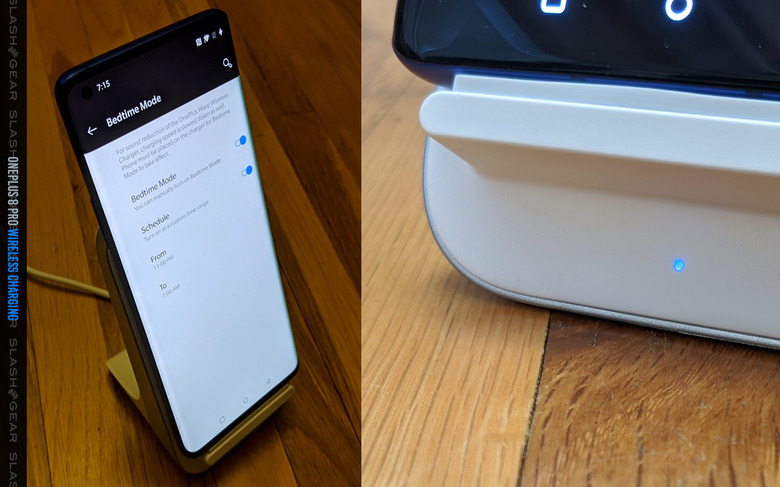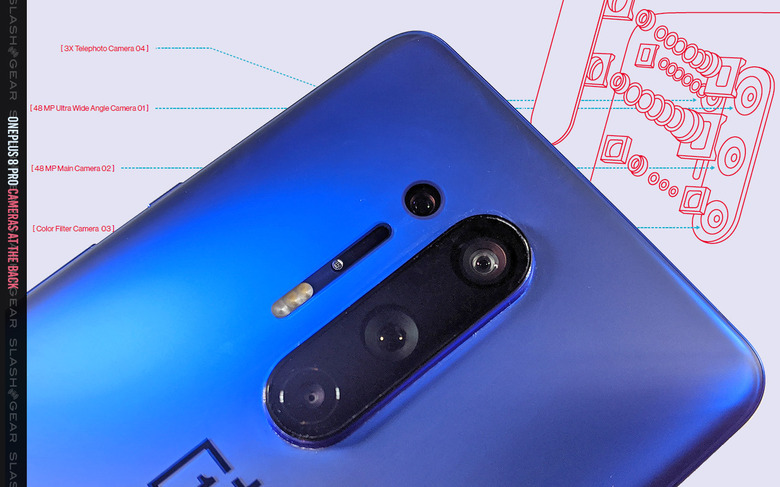OnePlus 8 VS OnePlus 8 Pro Hands-On - Cheaper Or Better?
The OnePlus 8 Pro provides the best possible vision for a 2020 smartphone of its size, at its price. The OnePlus 8 represents a similar vision, for less money, with a few key differences that make it an experience more akin to "everything you need plus a bit more." The differences begin at the size of the display – which, when turned OFF, seem quite similar.
The Display
The OnePlus 8 has a 6.55-inch display, while the Pro has a 6.78-inch display. Both have similarly rounded corners, both have a circular punch hole for their front-facing camera. These devices both have displays that give you an experience that's at LEAST slightly above-and-beyond what the average person needs in an everyday smartphone.

The OnePlus 8's display is 1080 x 2400 pixels across 6.55-inches, giving it a 402 pixels-per-inch pixel density. While some companies that release two phones like this at once tend to give the larger device a lower pixel density, OnePlus gave the bigger device an even more densely-packed display panel. The OnePlus 8 Pro's display is 6.78-inches with 1440 x 3160 pixels for a 513 PPI pixel density.
SEE TOO: Our full OnePlus 8 Pro Review: No more illusions
Both have the same generation of Corning Gorilla Glass reinforced glass panel to protect their displays, both come with HDR10+ tech in the panel, and both run at at least 90Hz image refresh rate.
The big difference here comes in the OnePlus 8 Pro, which can also ramp up to 120Hz image refresh rate – that's significantly smoother, but only really if you've got the devices one right next to the other. Both support sRGB and Display P3 tech, and both are branded "Fluid AMOLED" panels by OnePlus.
Put one right next to the other, you'd be forgiven if you assumed they were made at the same time and color tuned at the same time. The OnePlus has a "Vibrant Color Effect" mode instead of "Vibrant Color Effect Pro" mode, but the differences here – and in the panels in general – can only really be seen RIGHT next to one-another.

If I place the OnePlus 8 next to the OnePlus 8 Pro, and I've got them both set to max brightness, I can see a slightly more deep gray in the OnePlus 8 Pro. It's barely visible to the naked eye, but it's there. If they're both in Dark Mode and have black backgrounds in settings, they once again appear identical in color range.
Battery Life
If you're looking for the longest battery life between these two devices, you'll probably want to go with the OnePlus 8, not the Pro. Thus far we've been hard pressed to find any significant difference in battery drain, especially if we set both devices to 60Hz refresh rate.
But the OnePlus 8 Pro only otherwise has a 120Hz refresh rate option, while the OnePlus 8 only has a 90Hz refresh rate option. It's possible that we could force the most battery-conservative options on the OnePlus 8 Pro so that it'd last as long as the OnePlus 8, but it's still running a slightly larger display.

The OnePlus 8 Pro has 30Hz wireless charging if you've got the one branded charger that'll allow it. Otherwise they charge at the same speed. The OnePlus 8 Pro also has "reverse wireless charging" which allows the device to act as a Qi-standard wireless charger – which is neat.
The Cameras
If you're looking for as-good-as-possible photos in every conceivable way, you'll want the OnePlus 8 Pro, and the boost in camera features will be worth that extra cash. Save the LED flash array, every other part of the OnePlus 8 Pro's backside camera setup is bigger and better than the OnePlus 8 camera experience.

While both devices have a 48-megapixel sensor for their "main" rear camera, the OnePlus Pro has a Sony IMX689 sensor while the OnePlus 8 has a IMX586 sensor. The Pro captures larger pixels, (1.12 µm/48M; 2.24 µm (4 in 1)/12M) which means more potential light and sharpness. The OnePlus 8's main sensor captures 0.8µm sized pixels.

If you're talking about the front camera, you'll be working with literally the exact same piece of hardware. Both use the same 16MP Sony IMX471 sensor. They're the same up front for camera quality.

The one and only place where the OnePlus 8 excels beyond the OnePlus 8 Pro is in its ability to capture macro photos. Where the OnePlus 8 Pro has a Telephoto Lens and a Color Filter Lens, the OnePlus 8 instead has a single Macro lens. It is a 2-megapixel lens with Pixel Size: 1.75µm and a f/2.4 aperture, so the photos don't really have masterpiece potential right out the gate, but still – the minimum distance at which the OnePlus 8's camera array can focus is significantly closer than that of the OnePlus 8 Pro.
Verdict
If you're on the fence about the OnePlus 8 vs the OnePlus 8 Pro, remember that they'll almost certainly get software updates for the same amount of time, having been released at the exact same time. Also remember that they'll probably have the same software experience until they're both put out to pasture.
The camera experience isn't significantly different if you're only planning on taking the occasional social media goofball photos or video – but if you're doing anything more than that, the OnePlus 8 Pro is certainly worth the one-or-two hundred more dollars you'll be paying if you're paying for one of these phones all at once.
